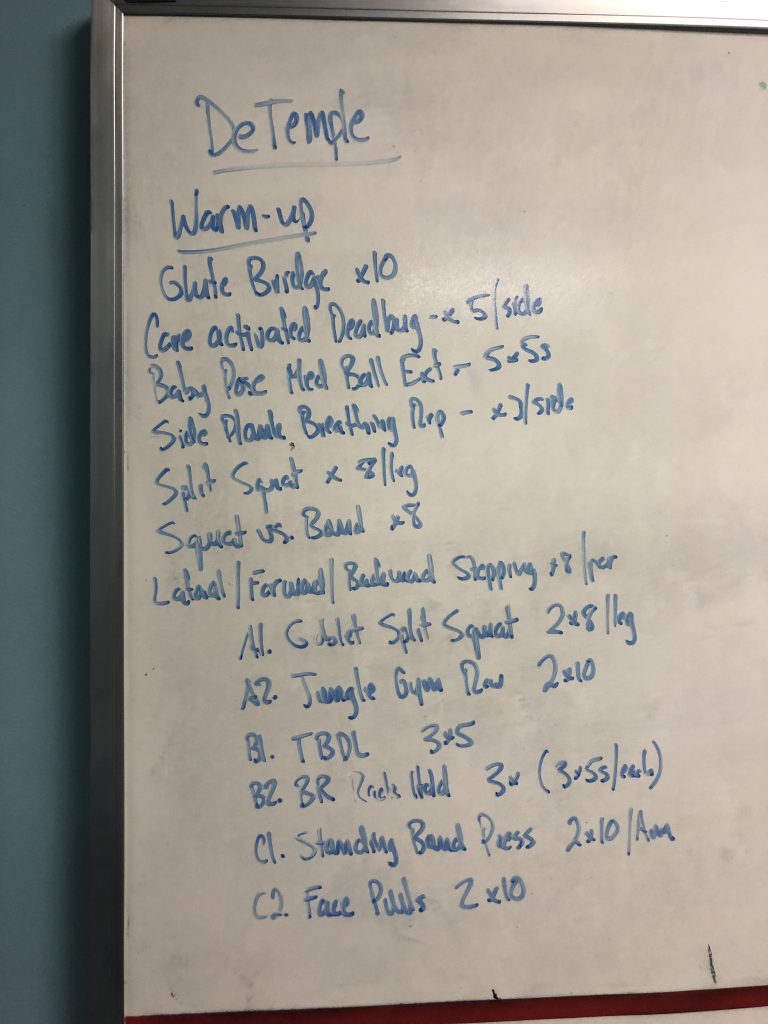I’ve had a rash of fitness professionals reaching out of late asking the same question in varying iterations…
…a question, mind you, that I think every fitness professional ponders at some point:
When the hell is someone going to green-light a sequel to Over the Top?1
Okay, in all seriousness: the real question revolves around writing training programs. Specifically the process and how to do it(?).
Ready?
Here goes…
Writing training programs is a lot like foul shots.

You Do It, Then Do It Again, and Then Again
If you want to get better at hitting more foul shots in the 4th quarter…you practice taking foul shots.
Likewise:
- If you want to get better at chess you play more chess.
- If you want to get better playing a guitar you play more guitar.
- If you want to get better at nunchuck skills you practice nunchucking.
- If you want to get better at not getting laid you join a Lord of the Rings reenactment society.2
I know people reading want me to drum up some esoteric explanation of how to write programs, but really…
…that’s the secret.
You just do it.
And over time, by the mere math of it all, and the repeated exposure to the act, you have no other option but to get comfortable, better, and more competent with the process.
I mean, I can click on the folder affectionately titled “Making People Diesel” (<– I.e., the programs I write for my clients) and peruse thousands of programs.
This isn’t to say there hasn’t been a metric shit-ton of reading, studying, and watching a lot of really smart people talk about program design behind my madness.
There’s inevitably a “backbone” of knowledge that’s (constantly) being updated, expounded upon, experimented with, and altogether reconsidered from my vantage point.
That said, when it comes to writing effective training programs there’s nothing more poignant for me to offer other than to say…
“Write them…that’s how you get better at it.”
Moreover, I’ll be the first to admit I have never written a perfect program. I am constantly x’ing stuff out, changing this to that, and/or doing my best not to be an abject failure.
Stop thinking you HAVE to be perfect (<— which is a barrier I feel intimidates a lot of fit pros).
Have a plan, yes.
But be prepared to change something 100% of the time.
Let that sink in.
Coaching people is about adaptability. I am ALL for having a plan and some semblance of “order” to help someone from Point A to Point B.
However, life has an uncanny way, almost comedically so, of peppering us with monkey-wrenches, curveballs, and tomfoolery that can detail the best of plans.
Work happens. Lack of sleep happens. Shitty bosses who keep you late happen. Holidays happen. Kid’s explosive diarrhea happens.
Life happens.
And that often means switching gears.
Speaking personally, and given I work with predominately general pop clients – who’s schedules tend to be a bit more chaotic and unpredictable than that of a professional athlete – I’ll go off script often.
Whiteboard Workouts
Every one of my clients gets an individualized program written for them based off their goals, injury/health history, and ability level.
I pride myself on that.
However, sometimes a client will show up late, or maybe will have a sore shoulder, or worse maybe feel like they crossed paths with a Targaryen when they arrive for their training session.
Plans change.
I’m not doing them any service by forcing them to hit that heavy deadlift triple because the program calls for it. As my colleague, Zach Even-Esh notes:
“Coaches get too caught up in the ‘We HAVE to do it, it’s on the program!’ Autoregulate. Adjust & adapt.”
In this scenario I’ll do what I like to call a WHITEBOARD WORKOUT.
Nothing fancy here.
I’ll just forego their actual program and write something up on the whiteboard instead.

I know in some circles I should spend a life sentence in Azkaban for doing something so blasphemous. I’d argue I’m being a good coach.
And since this is my website (and my blog) I’m totally right….;O)
And That’s That
I had someone chime in with following comment on Twitter:
“How do you silence the voice that says “if you keep changing things your clients will think you’ve no idea what you’re doing!”
Easy.
I turn my hat backwards and tell it to STFU. I change things under the guise I have their best interests in mind, and not my ego.



